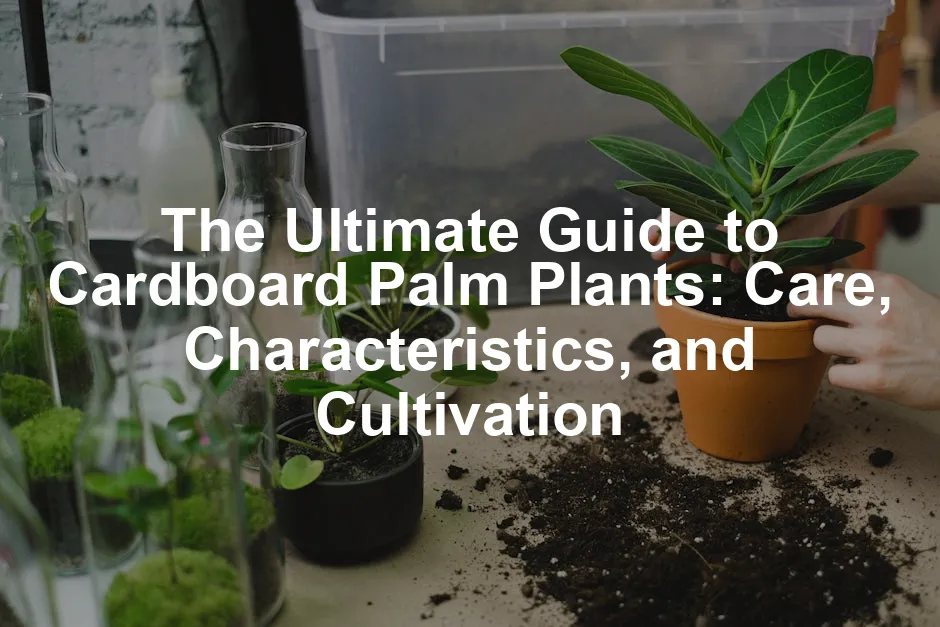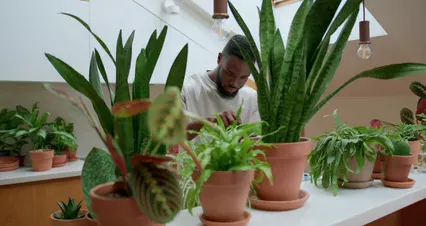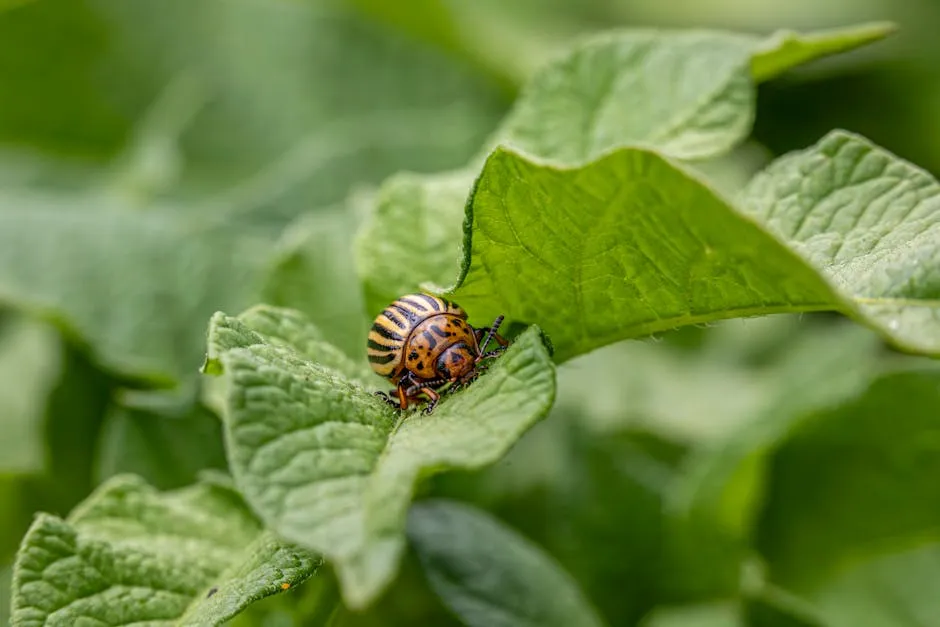

The Ultimate Guide to Cardboard Palm Plants: Care, Characteristics, and Cultivation
Introduction
The cardboard palm plant, or Zamia furfuracea, is truly captivating. Its unique appearance makes it a favorite for both gardens and homes. Understanding how to care for this plant is essential for anyone considering adding it to their collection. With the right knowledge, you can enjoy its beauty for years to come. You might want to spruce up your gardening game with a Indoor Plant Grow Light to keep those greens thriving!
Summary and Overview
The cardboard palm, a fascinating cycad, is not a true palm. It offers a rich history, thriving since the age of dinosaurs. Native to the Yucatán Peninsula in Mexico, this striking plant adapts well to various climates. Ideal for USDA hardiness zones 9-11, it’s popular in landscaping for its lush, evergreen foliage.
The cardboard palm features stiff, leathery leaves that can reach up to three feet long. While it grows slowly, it can expand to six feet in diameter. Its ability to tolerate drought and low maintenance needs makes it a great choice for busy gardeners. As a houseplant, it adds a touch of exotic charm, making it a beloved choice for indoor spaces. Don’t forget to keep your plant properly hydrated with a Watering Can with Long Spout for those tricky spots!

Characteristics of the Cardboard Palm
Physical Appearance
The cardboard palm, known scientifically as Zamia furfuracea, boasts distinct features. Its leaves can grow up to three feet long, with stiff, leathery leaflets arranged in pairs. This evergreen plant showcases dark green foliage, adding an attractive touch to any landscape.
The cardboard palm grows slowly, expanding to about six feet in diameter. It has a thick, fleshy trunk that serves as a water reservoir during dry spells. This trunk also produces unique reproductive structures. Male and female plants generate distinct cones, with the female cones eventually revealing bright red seeds. The growth pattern is striking, making it a standout feature in gardens or homes. If you’re looking to enhance your plant care routine, consider a Soil pH Tester for Plants to keep an eye on those levels!
- Leaf size and structure: Up to three feet long.
- Evergreen foliage enhances aesthetic appeal.
- Unique growth habits with a fleshy trunk.
Historical Background
The cardboard palm has a fascinating historical significance. It thrived during the age of dinosaurs, showcasing its resilience and adaptability. Native to the coastal regions of Mexico, this cycad has been part of traditional landscapes for centuries.
In the 19th century, the cardboard palm made its debut as a popular houseplant. Botanical conservatories sparked interest in its unique characteristics, leading to its cultivation. Over time, gardeners have embraced it for its low maintenance and drought resistance. To further your gardening knowledge, consider a fantastic Xeriscaping Guide Book to explore water-wise gardening techniques!
- Origin: Native to the Yucatán Peninsula in Mexico.
- Importance: A staple in traditional landscapes.
- Historical timeline: Cultivated since the 19th century, gaining popularity as a houseplant.

Growing Conditions for Cardboard Palm
Climate and Hardiness
The cardboard palm thrives in warm climates, specifically USDA hardiness zones 9 to 11. This means it enjoys mild winters and warm summers.
- Temperature preferences: Ideal temperatures range from 60°F to 80°F. It can tolerate brief drops to 50°F but should be protected from frost.
- Growth in various light conditions: It does well in bright, indirect sunlight but can handle partial shade. However, avoid intense afternoon sun, which can scorch its leaves.
- Tolerance to environmental factors: The cardboard palm is resilient to drought and can withstand salt spray, making it suitable for coastal areas.
Soil and Watering Needs
Choosing the right soil and watering routine is crucial for your cardboard palm’s health. To make this easier, a Potting Soil Mix can provide the perfect base for your plant!
- Ideal soil composition: It prefers well-draining soil with a slightly acidic pH, around 6.0. Consider mixing in bark chips or orchid mix to enhance drainage.
- Watering frequency and techniques: Water the plant deeply but infrequently. Allow the top inch of soil to dry out before re-watering, especially during winter.
- Signs of over or under-watering: Yellowing leaves can indicate overwatering, while brown leaf tips suggest underwatering.

Care and Maintenance
Light Requirements
Providing the right light is key to a thriving cardboard palm, whether indoors or outdoors. You can ensure optimal growth with the help of an LED Grow Light Strip that mimics natural sunlight!
- Preferred light exposure: For outdoor planting, bright but indirect light for 6-8 hours daily is ideal. If growing indoors, place it near a sunny window, preferably facing south or east.
- Effects of too much or too little light: Insufficient light may cause leaf yellowing, while excessive direct sunlight can lead to scorched leaves. Rotate your plant to ensure even growth.

Fertilizing and Pruning
To keep your cardboard palm healthy, proper fertilization and pruning are essential. Using Slow-Release Fertilizer for Plants during the growing season can give your plant the boost it needs!
- Type and timing of fertilizers: Use a slow-release, balanced fertilizer during the growing season, which runs from March to June. This helps provide necessary nutrients without burning the roots. For new plants, wait a few months before fertilizing to allow them to settle in.
- When and how to prune effectively: Pruning is rarely needed. Only remove dead or damaged leaves as they appear. If your plant grows too large, consider pruning offshoots to maintain its size. Avoid cutting the main plant, as this can disrupt its natural shape and growth pattern.

Common Pests and Troubleshooting
Cardboard palms are generally resilient but can face some challenges. For more information on how to manage these issues, consider exploring common pests in Japanese friendship gardens and how to control them.
- Signs of pest infestation: Look for brown leaf tips, yellowing leaves, or sticky residue on the foliage. These can indicate pests like spider mites, mealybugs, or scale.
- Effective pest control methods: For minor infestations, neem oil or rubbing alcohol can effectively treat pests. Isolate new plants for a few weeks to monitor any issues before introducing them to your collection.
- General troubleshooting for health issues: If your cardboard palm shows signs of distress, check its light exposure and watering routine. Insufficient light can cause yellowing leaves, while overwatering may lead to root rot. Adjust care as needed to help your plant thrive.

Landscaping Uses
Design Considerations
The cardboard palm is a fantastic choice for various landscaping scenarios. Its unique structure can make it a standout feature in your garden. If you’re interested in container gardening, you might find the container gardening ideas for small spaces helpful. You can also enhance your garden aesthetics with some Decorative Garden Stakes!
- As a focal point, it draws attention and adds character to your outdoor space. Picture it surrounded by colorful blooms or contrasting foliage. It truly enhances the overall design.
- This plant works well with companions like succulents, ferns, or flowering plants. Its rich green leaves provide a beautiful backdrop, making other plants pop.
- For xeriscaping, the cardboard palm shines. Its drought tolerance means you can create a low-water garden that looks stunning year-round. Consider container gardening too! It adapts well to pots, allowing you to change its location as needed.

Incorporating the cardboard palm into your landscape can elevate your outdoor aesthetics while requiring minimal maintenance. And if you’re looking to enhance your garden with some functional tools, a Garden Pruning Shears can be a gardener’s best friend!
Please let us know what you think about our content by leaving a comment down below!
Thank you for reading till here 🙂
All images from Pexels



